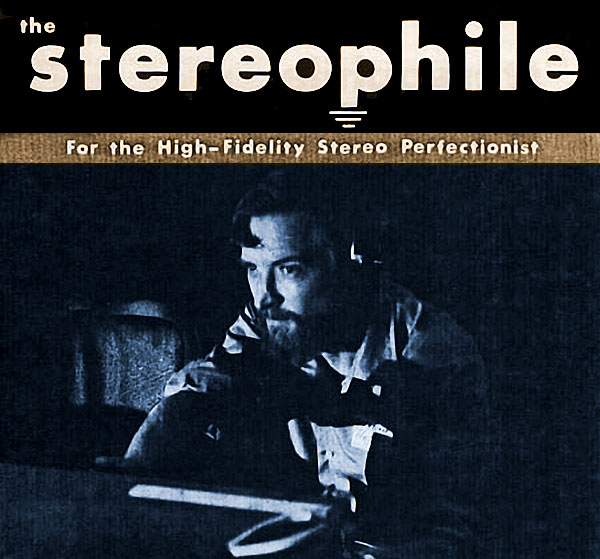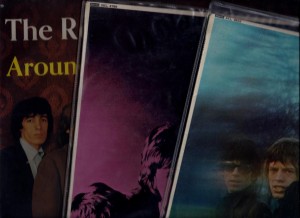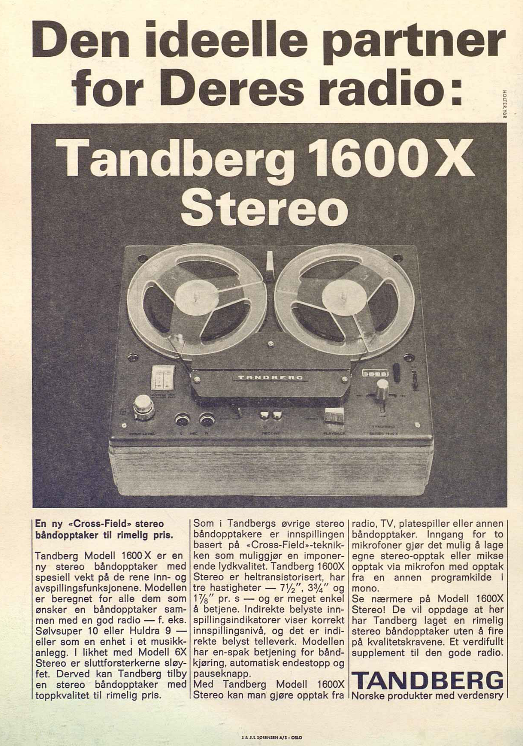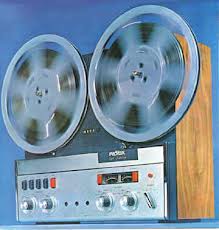
A rolling stone?
I was surprised, recording digital versions of my LPs Around and around (1965), Aftermath (1966) and Between the buttons (1967) recently, how mysogynist the Stones were at the time.
It is not just “who needs yesterday’s paper, who needs yesterday’s girl”. It is “Under my thumb” (“the girl who once had her way”), and much else. It smells bad, worse than I remembered. Together with some stylted upgrading of idealized women (“my sweet lady Jane”), the main impression regarding women is that they should be distrusted and kept in command.
True, this was not the main message of the Stones – the main message was one of revolt. But it was part of the “sneering revolt” attitude. No longer the idealized love of the Beatles – love in more low-down ways.
Although the Stones got their largest hit Satisfaction from a text deriding consumer society rather than women, other hits (e g All over now) have misogynist traits. True, the Stones got some of it from the traditions they followed, but there is no mistake, they gave it a further twist too.
However – why is it that misogynist traits in music from this period sometimes go together with the best music? I don’t know. This is a private rule of mine, since it happens on several records (e g Deep Purple: “Why did not Rosemary ever take the pill”) from the 60s and 70s.
I think, perhaps it is not misogynism, this is not what actually happens in the music-making, it is more like a bit daring text, or some other element of revolt, also against women, the things close at hand, as well as society. These are actually two very different aspects, although they have often melted into one. It is only the first revolt aspect that actually engages the good music. Misogynism as a longer term proposition instead tends to stifle artistic creativity. This is my hypothesis.
Later, the Stones tackled life crises and more gender-equal relationships like everyone else, sometimes with depth and perception (You can’t always get what you want; Black and blue; I’m just waiting for a friend). But at the time, in the 1960s, they were the great “opposition” to the love theme of the Beatles, a more working class and less women-friendly version.
“We want Rolling Stones, Beatles go home, yeah yeah” was a slogan here in Norway. The Stones and the Beatles both stood for a new “free” sexuality. But the Stones were associated with “macho” tendencies in the youth revolt of the late sixties.
One could say, the Stones had balls, they tackled this dilemma by the horns, creating songs like Sympathy for devil. “Please allow me to introduce myself – I am a man of wealth and taste”. This is not, actually, so far from Roy Harper: I hate the white man, or other critical songs at the time. Even if it is not Leonard Cohen: Suzanne.
And there is no telling, whether things would have been better, with a more feminist attitude in the band. I think so. Yet according to the morale at the time, it could have meant a less intense, less good band. E g in the direction of the US band Bread (quite a horrible thought. Or a UK version of Jefferson Airplane – doable, but not likely in this setup). The Stones did try the psychedelic direction, including more madonna-like portraits of elevated femininity, without much success (Her satanic majesty’s request). Go back to where you sneer, seems to have been the main reaction – back to your roots.
There is the possibility that the Stones were not mainly recording their own sentiments. They were just doing their best as critical pop-rock musicians, musical journalists – more obviosly so, in songs like Mother’s little helper – recording the sentiments and happenings at the time. This is not all there is to it, but it does connect to a major part of the code at the time, and deserves a hearing.
Together with the assumed “misogynist” texts we find much youthful suffering and will to establish a relationship (e g Time is on my side). The so-called misogynist statements are partly derived from an older blues context and should be seen in a wider context. At the time, it was age and class rather than gender that governed the attentions of the day. The Stones’ early output was part of an age revolt, a youth counterculture, not a gender revolt.
Even so, however, the background misogynist pattern, and the chosen “sneering difference” from the more optimistic love message of the Beatles and others, become more obvious, listening to their 1965-67 albums once more, in 2014.
[NOTE: Raewyn Connell and Michael Kimmel have mailed comments to this text – to be updated]

On (re)discovering Kevin Ayers
Some of his music is very intense, and has great complexity and depth
(Kevin Ayers, 1972 concert)
Why pick up Kevin Ayers? Well, he died 68 years old in February and I was sad by this news. His songs are not closed, not polished, but open, or opening up in hazardly and unexpected ways. There are good reasons to rediscover his music. Ayers grew up partly in Malaysia, was a friend of Syd Barret (Pink Floyd), and liked the “whimsical” attitude of the best English pop music.
I thought I had heard most of it when it came out, from the late 1960s onwards, and I probably did at friends’ places and at parties, but it turns out I only had tapes of two of his albums, Shooting at the moon (1970) and Yes we have no more mananas (1976), both of which I enjoyed and played quite often, but sort of forgot later. When I went from tapes to vinyl in the 1990s I eventually picked up the Yes we have.. album (Harvest / EMI SHSP 4057) for NOK 150 and The Confessions of Dr. Dream and Other Stories (1974, Island ILPS 9263) for 100. Good used vinyl was cheaper than today. I bought many used LPs, and again, Ayers was sort of forgotten.
This has changed for the last weeks. The Dr Dream sequence, with Nico on vocals, is still very dense, chilling, and top quality – this is a good and underrated LP (did they listen not just to side A but side B also, at Allmusic.com, which gives it only two stars?) It has a very strong message to counter culture, be vary of dream makers, Dr. Dream and his ilk. Although the album arrived a bit late, and was not much heeded. This was prog after prog had fallen out of fashion.
The cover of The Confessions of Dr. Dream and Other Stories, scanned from my LP, below.
The cover has a man and a woman holding up masks to each other. The main sequence is complex music, not easy listening. The idea is that we are not really real to each other, in today’s society.
As I said, Ayers has been heavily played over the last weeks, and emerges as a much more interesting figure than I first thought. Listening to Unfairground (2007) in a digital version, I like the “prog” attitude which is still there in his songs. I hope it does not die out. On this album he emerges as older, more mature, still witty and observant, still with melancholy, but also more depressed than the 1970 man.
The way I see it, this depression is not psychological, mainly, but sociological. It happened to Ayers and a lot of other progressive artists from the 1965-75 period. It happened to the conscious part of the “1968 generation” generally. “What happened to our dream?” is a symbolic question.
Neil Young sings: “We were gonna save the world, then the weather changed, and it fell apart, and it breaks my heart” (“Walk like a giant”, on Psychedelic Pill 2012). “But think how close we came”.
Basically, the revolution that the “counter-culture” wanted did not happen. It was beaten down in the streets of Chicago during the Democratic convention in 1968, and in Paris and Prague the same year. “There’s blood in the streets of Chicago”, Jim Morrisson sang (“Peace frog”, Morrisson Hotel 1970); George R.R. Martin described it in his novel The Armageddon Rag.
Repression was the order of the day, here in the UK:
This picture could be called, “Long-haired freak brought back to normal”, or similar (although these terms are somewhat later). Note how one needed many men to do it. Ayers grew up with this kind of repression in his formative years as a youngster and young artist. The above picture is from a photo, probably ca 1968, shown in interview with Ayers: http://www.youtube.com/watch?v=a6kslKx5Zdo. This kind of repression, in the police as well as in schools, has recently also been documented in autobiographies from the time, including those of John Peel and Keith Richards, and in Miles, Barry 2004: Zappa – a biography.
Below, a 1972 concert picture http://www.youtube.com/watch?v=wsF-gTyXA5Q
One should not be misled by appearances. There is a wordly look and a bit of a sneering attitude, not towards the audience, but in his music and the way he introduces it, “insouicance” towards the powers that be, for example, in the early videos of “Why are we sleeping” – a protest song (see also BBC version).
Another thing I like about him is that he has a kind of doodling attitude, rambling, being a bit lost, finding new ways. There is something wonderfully fresh and inventive, even if things don’t always work out in all his songs. An innovative aspect that can at times be thrilling, like when I first the best songs like “Walk on water” on the 2007 Unfairground. Just one word – wow.
He was certainly a paradox. From this thin young man one might expect a falsetto, but instead what comes out is a deep and somewhat world-weary voice. His words have a sense for small inconsequential things, but a special flair, in the direction of Syd Barrett, of making these small things suddenly emerge, flare up, with another and larger meaning. Truly a “prog” artistic ambition, if there ever was one. Yet at the same time Ayers scaled down and very consciously so, not wanting to be a superstar, but instead creating lyrics that were everyday and simple but also ironic and disobedient to the music machine as well as the rest of capitalism, or the system. He never obligated to become a money making artist, since he had seen other young artists like Jimi Hendrix being misused by the music machine. So even his most famous song May I is a bit “crossed over” so not to fit the hit machine either in France or the UK, although borrowing elements from both musical traditions, and free from commercial obligations, all the more playfully so,
Kevin Ayers was a musical innovator, a collage maker, a kind of “head” musical journalist (often, going down, down below, to the small things) – and thereby a postmodernist long before his time. He early rejected the technical-musical direction of Soft Machine and went for a more laid-back approach instead, at least on the surface. Yet some of his music is very intense, and has great complexity and depth.
He seems to have been a kind and charming but also sometimes shy and troubled man. The general idea in the 1970ies was that he lived the life and partied with long stays in Ibiza, and elsewhere , although he delivered an album a year or so for a long period, so he clearly worked with his music.
“A pretty face will find a place, it is an easy place to be”, he sings in “Walk on Water”, 2007.
“But you know
You’re only a show
And you’ll reap what you sow
In your own way”
This song targets three figures, the rich or successful who “just got it made” and “never see themselves completely”, the people who “really need attention” and “just see what they wanna see”, as well as the pretty faces.
As part of the counter-culture, Ayer’s target of critique was not capitalism as such but a wider category, “the establishment”. Music should be a kind of critical reportage about “the establishment” versus “the people”. The latter was a very vague category – flower power? Good vibrations? Love? – and softly defined (like Soft machine), not hardcoded like it became in the Marxist (or religious, ecological, feminist etc) 1970s splinter versions of counter-culture.
Ayers was a very conscious participant of the counter culture, as he said later, this was the first time a young generation had got up and questioned the whole system, “saying, we really won’t do, you know, what our parents did”. See interview (not dated, early 2000s?) here:
http://www.youtube.com/watch?v=a6kslKx5Zdo
Kevin Ayers is presently rated as 42 percent gay on the gay-o-meter presented here http://www.gay-or-straight.com/Kevin%20Ayers. His 1970 counter culture persona is not so easy to place, with post-modern-gendered eyes.
Note the symbolism of the UK police picture, above. Three short haired men in helmets are attacking a long haired man. Down! Obey authority! This was the attitude of the establishment, as people experienced it at the time, making even Keith Richards (in Life) become very clear – the system was out to get us!
Finally, a shot of Kevin Ayers, in the 2000s interview referenced above. He is a good interview object, telling stories with laughter, morale and insights, speaking of the great turmoil of 1968, the dreams he carried, and what happened after.
His most famous song “May I” tells the story of a male traveler who, weary, looks for a place to eat and sit down. He finds a place. There, a woman is sitting by another table. In the song, he asks for her allowance to let him look at her, “for awhile”. This temporary sense is the clue to the song’s uplifting quality. He is not out to grab her or make love to her, but just look, for a little while.
“May I” is a bit like a fifteen minute visual coffee flirt – but also a still life picture, beautifully developed into words and melody. Words and music hang together, in all his work, despite the large musical variation, showing his awareness to another main message from the counter culture. The head is not dead.
It is typical of Ayers’ music that after a heavy attack there is some rest, peace and silence. This was the way “concept” albums were made, in those days. After the Dr. Dream sequence, we get the song “Two goes into four”, a reflective and dialectical Ayers:
“Two times no more
Two will make four
Blue goes into green
Mostly unseen
Blue becomes green
Dreams take me so far
Life is the star
Trapped in my jar
Go follow the wind
Open your heart
Then you may start
To make it better”
The last two lines are a direct quote from Beatles “Hey Jude”. In a 1998 interview, he describes his way into the middle-class Canterbury scene as just an amateur being chosen “because I had the longest hair”. He was “dancing in the dark” musically. At the same time he did not like the “self-indulgent” musical direction of Soft Machine, although they remained friends. The main philosopher who has made any sense to him, he sais, is Gurdieff,
“What he said made sense to me. What I really liked about him was, he was a total charlatan. He didn’t make any bones about it. His thing was that you cannot present the truth to people in simple form. You have to elaborate. Otherwise they’re not interested. Did you ever read his book? It’s just bullshit, absolute bullshit. But he says, you have to write 100 pages to say one sentence, to make it interesting for people. Otherwise they won’t accept it as real. You have to say a lot in order to get a little across.
Q: Are you still inspired by things like that when you write?
KA: It’s still there. I mean, I still think he was absolutely right. His two premises were, you have to say a lot to get a little across. you have to excite people. The other thing was, we’re only working at five percent of our potential, which made total sense.”
My comment – well – if not “total” sense (the kind of obscure head / hippie talk that did not help), at least a lot of sense. The cultural “elaboration” associated with the counter culture was what created a mass movement, not just a small movement or sect. However the glue that held it together was very much relying of the spirit of the time, 1968, “the age of aquarius”, a fully new way to live, and so on, that did not make it.
Later the interviewer asks:
“Q: You’re talking about hitting thirty- were you conscious of the British underground that had started around ’67 losing momentum around that time?
KA: You only become conscious of things that you have things to compare them to. You can’t make assessments if you don’t have something to compare them to. I think that what happened with post-war society–suddenly young people were going, we don’t like what our parents are doing. We don’t like war. The war was over, people had money, and they had time. It was like a one-off. My youngest daughter says to me, geez dad, I wish I’d lived in the sixties. I know what she means, because there was a whole bunch of stuff happening. People were pre-video and people read books in those days, and talked to each other. It was a unique time. In fact, if you check the history of human beings, you’ll find it’s the only time that young people ever got up and had any effect at all. What happened was that the establishment moved in and discredited them- “they’re hippies, they don’t wash, they smoke pot.” But there were huge advances in human rights and basic freedoms. It never happened in the history of man, never.”
A sociological part of the 1968 generation late-life depression is, very simply, that if you connect your hopes in your youth very strongly to the new and the young, there is a risk of misalignment later in life, especially if these hopes do not come true later on. As you turn old, you will not only feel out of it, but especially out of it, since the reason you were in was so associated with your youth in the first place. In Ayers’ words (2008 interview),
“I’m not getting any younger and it hits you after a certain age. What I mean is that you realize that certain thing probably won’t happen any more. There’s a kind of loss feeling more than anything else.”
Later in this interview he says that his albums have mainly been inspired by love affairs. “ I don’t necessarily have to write about the love affair but it just gives you the impetus to get going.” He also said, in a circa 2009 interview: “It’s true my attitude doesn’t suit the industry. I’m not into fame or ego. I’m crap at anything other than my music. There should be room for people like me.” An interesting thing about Ayers, like Sapho, is that you can seldom tell what is the gender of the person he loves, from the song itself. The love goes beyond gender. So perhaps he was a bit bi or gay. It does not matter.
Other sources:

Break on through to the other side
A more mature – and in a way, more genuinely frightening – version of this Doors song can be heard here (Rhino records RL 523104):

Don’t you know when a head’s dead, Cream asks in this recording, in the song “What a bringdown”, on their Goodbye album, 1969, an amazing bit of forecast on later events.
The song tells of the many marry pranks of the sixties prankster, and yet, their whole purpose was dying down. The head had been killed. The song describes the artistic reason why the world’s first supergroup (after the Beatles) closed shop.
“Moby Dick and Albert making out with Captain Bligh
So you know what you know in your head”.
Yet all these trips and head maneuovers won’t make out – unless there is some reality change too.
When the head is dead, there is no more to be said. What a bringdown!
So, goodbye, Cream.
“The head” in this lyric was slang for the counterculture, including the hippies, at the time.
Note that this song was written before the Kent University student murders, the murders of the Black Panthers, and other events. It became “sadly true”, even more than anticipated.
On their Goodbye LP, Cream was also before their time, reflecting on the influence of women, e g in the song Badge (with some of Clapton’s best guitar work ever);
“Thinkin’ ’bout the times you drove in my car.
Thinkin’ that I might have drove you too far.
And I’m thinkin’ ’bout the love that you laid on my table.”

I have always been interested in tape recorders. In fact this was where I started my life as an audiophile, 16 years old, investing in a Radionette Multirecorder in 1968.
This was a smart, youthful, portable device for its time – see more advertisments here.
It came with a microphone, so I used it for interviews, for taping from radio, and not least, taping vinyl.
This last purpose soon evolved to become a main use, so I invested in a Tandberg stationary tape recorder, in fact two models, the first described here;
I nding up with a Revox A77 in the early 1970s. I am not sure how the Radionette passed out of my life, wish I still had it. A very clever piece of engineering, although Radionette and Tandberg were later merged, the poppy Radionette development department was closed down. Some years later, the merged Tandberg went bankrupt. The company had sadly been overwhelmed by cheaper transistor products from the east, according to the official story.
I used the Revox as a major music source for many years, but got convinced that data was the way to regarding music, or that this should be tried out, so I started using DAT recorders in the 1990s. I invested in a Sony handheld DAT player, and used three of their models, including the Sony DAT Walkman TCD-D100.
 I bought at stationary DAT recorder, Sony DAT DTC-ZE700.
I bought at stationary DAT recorder, Sony DAT DTC-ZE700.
However DAT recorders are limited to the CD level of digital sound – or close to it. I soon got tired of that.
In the 2000s, I have used a Korg MR-1, and – very portable – a Cowon D2. Of course they don’t sound as good as the Revox A77. But that is like carrying a large heavy suitcase (15 kg), while the D2 is like a matchbox and the Korg like a deck of cards. Leaving all complaints aside, this development is amazing, over fifty years. That the Korg at all competes with the Revox in some respects, and yet is less than 2 percent of the weight (200 grams), is amazing.
Still – however interesting reproductions may be, they are reproductions. For music the rule is true that the less recordings and the less overlay of other recordings, the better. Less is more. Over the last years the source itself has become more important for me. Yet tape recorders in all forms retain their use. A hard disk or music server can be a taping system, although someone else has done the critical transition from analog to digital. As a “prosumer” I would like to do most of that transition myself, or have more choice.
I am sure digital will one day sound as good as analog, but we are not there yet. Not by far, in my estimate. This goes even for SACD sound, the best I’ve heard so far (DSD). One reason is that analog corresponds with the molecular level of vinyl. Whatever happens to the diamond in the track, this is so “retro” that we just have a mechanical arm doing the data reading, and this, in fact, is more sensitive than current bit-based interpretations of music. So in analog you get music, in digital – well, it is OK for a while, but when can we switch back, please. Of course, this comes with the challenge of using a physical/mechanical very vulnerable and finnicky system that must be setup right to sound its best, like getting a telescope into focus.

Are stereo and sound equipment companies, and magazines that review their equipment, out to maximize music – or money?
What is their primary interest, the product or the profit?
This debate has flared up again, related to Stereophile‘s 50 years anniversary, cf
http://www.stereophile.com/content/50-years-stereophile

The accusation from the critics is that Stereophile has turned out to become exactly what its founder J. Gordon Holt did not want – a commercially driven magazine.
“Fifty years ago this month, Vol.1 No.1, Issue No.1 of The Stereophile, published, edited, and mostly written by J. Gordon Holt out of Wallingford, Pennsylvania, hit the newsstands. Gordon had worked for two major audio magazines, High Fidelity and HiFi/Stereo Review (later renamed Stereo Review), and had been disgusted by those magazines’ pandering to advertisers. Not only was The Stereophile going to tell it like it was, it was going to judge audio components by listening to them—a heretical idea in those days of meters and measurements. “Dammit,” said Gordon, who died in 2009, “if nobody else will report what an audio component sounds like, I’ll do it myself!“, writes editor John Atkinson who took over from Holt in 1986.
In my view, the critique has some truth, the magazine is some of both. Readers have to learn to notice cue phrases like “in its price class” and read between the lines. Yet in my own experience, the advice has mainly been good: the product has had the main say, not the profit. Sometimes there is “snake oil” (profit-making, empty claims) involved, but then again, learning to use the magazine goes together with using other sources also, like Audiogon (and in Norway, hifisentralen).
In my case, I have followed advice from others, including Stereophile, whenever I could not listen myself. I have made some buying decisions mainly relying on the magazine reviews, and although I have found better alternatives later, in some cases, I do not regret making those decisions.
I would like the magazine to sharpen its critical edge, to be more clearly “with” the listener with limited means – not just those with big wallets. Besides keeping a sharp critical eye, there are some areas where Stereophile needs improvement. One is mid-level equipment (in terms of price), not just top level plus a bit entry level. Lower mid-level is probably the level of most readers. Secondly, top level equipment gradually drifts down to mid-level as time goes by, and the magazine should give more space to second hand options. Thirdly, it should give more space to how systems sound as a whole, not just this or that component, but its synergy with the rest.

Although I listened a lot to Talking heads when their music appeared in the late 1970s, I was already in my late twenties, and my main or “formative” experience was from the late 1960s, so this was a kind of repeat of what I had heard before. It was only gradually that I came to realize, a better kind of repeat.
At the time, I had my musical radar open, and got their debut album “77” quite soon, but it was their follow-up “More songs about buildings and food” that really gripped me, beyond my first-round music socialization. I was amazed by the combination of “strange” and “melody”, even pop-hooked melody. Along with quirky but understandable lyrics – “I just want to be with the girls”.
For some reason, I lost interest in Talking heads in the early 1980s, and never listened so much to their other albums.
Time for a change.
I’ve bought “Remain in light” in the 2006 remastered edition (Rhino), and am sorry I missed it in the first place.
Like “More songs”, “Remain in light” is fresh and interesting, today. The first is still in a kind of “Americana”, it is within the bubble or gum wrap of commercial ‘pop’, the second more into ‘world music’. Together they make a shining path in the development of popular music.
Why do I like this music? My premier honor does not go to Byrne’s vocals or Harrison’s keyboards, or to others, although they are all very good. It goes to the bass playing of Tina Weymouth. She deserves a position in the hall of fame of rock music. This “verve” lady plays a great and deep bass, better than almost all I know of, when it comes to making the bass integrate with the ensemble effort, slowing it down, moving it up, based on melody, a greater sense of the whole, not just rhythm. Yes, her bass and the band playing can sound repetetive and tiring at times, but I think this is much due to the role she was given. When she is offered the chance to break loose, she is great. Her bass is the overlooked structure of the Talking heads’ success.
I was not aware of her later career with the Tom Tom Club. A new live CD sounds very good – to be checked out.

I just saw that Bob Dylan has a new album, Tempest, coming in September, and thought that this might be a nice place to sum up listening experiences the last months. Listening for good music, now as always.
Among music bought this last semester, I quite like Supersilent: 10, very experimental, great sonics.
Generally, albums bought in the last period have a bit better sound than before. LP producers seem to be advancing their act. Even a “niche” company like Rune Grammophone in Norway, the publisher of the Supersilent LP, makes sonically good recordings. Improved sound is noteworthy in some other European cases also, like the Nik Bartsch: Llyria LP, made in 2011 by ECM – remarkable sound quality, even if ECM LPs have generally always sounded quite good (if a bit thin, clinical, etc). Some of the tracks, like Exodus and Tomorrow never ends, on the Herbie Hancock: Imagine project LP were notably enjoyable also. I play some flute and guitar, and if the sound invites me to play – it is good, in my judgement. This one really does.
In 2011 I bought several “keeping up” albums by old groups and artists. The results were mixed, but often favorable, so I continued in 2012. I enjoyed, for example, the best tracks on Tom Petty: Mojo and on Robbie Robertson: How to become clairvoiant. I also managed to get hold of a few hard to get original gems, like Donovan’s 1970 double LP, HMS Donovan (an album with some great, overlooked songs with amazing sound, even if my copy, bought from Iceland (!), is only the second issue from Dawn (the legendary company). I also enjoyed Wizz Jones’s similarly overlooked LP Right now, reissued by Speakers’ Corner (I think, on my suggestion). I also bought new groups or artists, like Field Music: Plumb (quite good) and even Adele: 21 (hmm, well). Some music I buy just to get a feeling of current changes of taste – being interested as a researcher.
As analog sound is becoming more re-accepted, some “fresh tape” albums, relatively speaking, from the 80s and 90s, are getting good new remastering. An example is Talk Talk: The Colour of Spring, 2012 edition, on EMI (EMCX 3506) – a great album, better sound than the original I had, and well worth it. Another example is Paul Simon, Graceland – the new remaster.
Clearly there is more attention to quality in many places al0ng the chain. Among those who should be honored for this is, not least, Michael Fremer of Stereophile, who almost single-handedly started “the analog counter-revolution” back in the late 1990s. Back in the time when CDs as “perfect sound forever” was received wisdom.
Let me tell you my own take on this.
Personally, I held on to the “digital is superior” theory for five years or so in the early 1990s. I liked data programming, which became one of my favourite hobbies, along with music. This happened after a long period of recording LPs to analogue tape, in the 1970s and 80s, with a Revox A-77 recorder, and playing some of the LPs direct on a decent but limited system.
I thought, OK, let me give digital a try. At first, I was confirmed, or so was my impression. A bit is a bit, right! It was only after a while that I really started to note the digitalization deficits. The format was so practical and inventive – I wanted it to be best. But after awhile, I realized that CD sound was not such a great improvement of LP sound, after all.
In 1997 I bought a used Lyra Clavis pickup, somewhat by coincidence, meeting a good dealer at the south coast of Norway (Vidar Sonesen/Audio Art). After that, things never became the same. I gradually became transformed back into an analog person, simply using my ears. I started upgrading my analog rig. Vinyl was clearly the best source, even if one has to live with some medium deficits, like ticks and pops, decentering, warps etc.
I was not alone. After having literally been run down in a flea market, I stopped over-eager excursions into cheap used LP bins. Good analog costs money, yes. But it pays off. All the more reason to share information about what does sound good, and what does not, among the now-increasing analog offerings.
New LPs in 2012 – spring:
Dr John: Locked down. Quite good but too stressful – somewhat disappointing. Check out Duke Elegant instead, much more relaxed. The melodic core, harmonic logic and strictness of Ellington’s music seem to have worked exceptionally well for the doctor, on this “The duke meets the doc” album. It is a shame that it exists only on CD, not on vinyl, but the music is so good you mainly forget all that.
Bob Dylan and the Band: The Basement Tapes, in the new Mobile Fidelity (MFSL 2-382) edition. Agree with Michael Fremer – this improves on the original. Not a basement revolution perhaps, but enough to make re-listening more worthwhile.
On CD (I am not a vinyl fanatic); World Party: Arkeology. Although some parts are kitch or filler material, or in a draft stage only, on the whole, this 70 song set is remarkable and well worth a listen. Wallinger is one of the overlooked entrepeneurs of pop (see earlier blog post, under Music, on this site).
I was not happy about Pink Floyd’s Wish you were here, the new remaster, and returned it. It was not quite centered, and the variation in pitch was really unforgiveable on the long beautiful opening of Shine on you crazy diamond, which for me is a major part of wanting to own this LP . Even more so because the band experiments with pitch. If the speed is not 100 percent correct, the whole thing fails. I tried another copy, thanks to the Big Dipper shop that sells vinyl in Oslo, but that was decentered too.
Vinyl bought, but not yet listened to (phono stage on repair) – some have not yet arrived:
Doors: The Doors (first LP) and Strange Days (second LP), both on 2 x 45 rpm
Madeleine Peyroux: Bare bones
Patricia Barber: The Cole Porter Mix
Astra: The Black Chord
Grateful Dead: Reckoning
Glenn Frey: After Hours
Little Feat: Rooster Rag
And I’ve ordered Dylan’s Tempest, of course.

I don’t usually buy digital music (rather, analog LPs), but I make an exception in this case: World Party: Arkeology, a 5 CD box set with 70 songs and a booklet. I have ordered it.
World Party is about pop music, they are somewhat derivative, often poorly recorded, and so on, but I find them (or the band’s main man, Karl Wallinger) to be interesting and innovative, creating a cultural synthesis of pop music history.
To my mind, at his best, he is a master, re-recording classical pop sensibilities into the climate of the 80s and 90s. This is when one famous power holder claimed that “there is no such thing as society”. World Party proves the opposite.
One can be comforted by Wallinger singing “what is love all about”, but the listener is also constantly confronted and challenged. This is not just due to other songs and the context where the Beatles-like message of love is brought in and developed, but also by the way the music is presented and arranged. This is a “world party”, beyond Wallinger’s initial “private revolution”, the title of the band’s ramshackle first album, mostly with Wallinger playing the instruments. Due to sometimes bad quality, or more likely, his opinions, Wallinger and World Party were controversial in the music press and general media, and never received full endorsement or recognition at the time.
Their unruly and questioning “striving for depth” factor is what, speaking just for myself, makes the music unusually interesting.Wallinger tries to walk in the tracks of the giants in the pop field. He wishes to lift the whole “pop” thing, which incidentally includes the “lower classes” too, up to a higher stage.
So what works, for some, as just middle of the road pop music, nice to play in the car, or even drivel – may yet reach quite a lot deeper, when one listens more. The poor recording quality is a shame throughout this band’s career. Perhaps the new investment will help correct this, and increase the depth – we shall see, or rather, hear.

This is about getting up to speed, in the sound sense, about 45 rpm versus 33 rpm. The latest Stereophile discloses that some of the engineers behind the long playing vinyl disc actually wanted this disc to play at 45 rather than 33 rounds per minute, at the vinyl turntable. I did not know that, but from experience over the years I agree – 45 sounds better.
Quite a lot better, in fact. I had many 45 singles and EPs from the 1960s, but sadly only have a few (ca 20) today, due to my mother giving my collection away (never quite forgiven). The ones I have include some key examples, like the first record I ever bought, the Shadows: Apache, and their Foot tapper EP, both from the early 60s, The Beach Boys: Good vibrations, Roy Obison: Pretty woman, Fleetwood Mac: Oh well, Shadows: Mary Jane, Youngbloods: Darkness darkness, and others – important inputs to the pop industry.
The amazing thing about these records is how well they sound – far later. They should have been pushed aside by later reworking and remastering, but they are not. Especially, I think, EP’s sound great.
What do I mean great? I mean that the sonic landscape is very clear and textured, even if the recording is so-so. If there is a cow bell in the recording, chances are, it does sound like a cow bell, like the one in the beginning of the single by Unit 4+2, Concrete and clay, that I have. As a whole, my 45 rpm collection sounds truthful and good – even if the recordings are in many ways inferior to what are available later. The larger speed, 45 rpm, seems to contribute quite a lot. 45 rpm music sounds clearer, better textured, and more meaningful. This is true, in my case, even with old copies that have seen a lot of parties, compared to new 33 rpm versions.
Why did the late 1960s see a “pop explosion” leading to many other developments? Could it, also, be due to an overlooked variable, audio fidelity? That singles and EPs simply sounded remarkably good? When I listen today, on a quality sound reproduction system, the difference seems quite obvious. The singles that won the day in the 1960s sound good even today, and the EP’s often even better. These were the two formats performing at the higher fidelity speed 45 rpm.
Of course 45 rpm is by itself no guarantee that things will sound good. But it seems to be a consistent trend, from the 1960s onwards, that recording egineers have tried to “push” the best music into the best format yet available – the 45 rpm vinyl disc.










